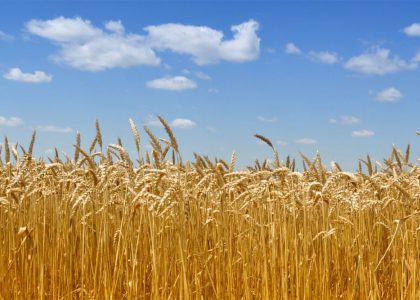The National Oceanic and Atmospheric Administration (NOAA) has repeatedly stated the growing case for the 2015-2016 El Nino event. While much has been discussed in the headlines, very little of the conversation has focused on the commodity price impact that the most significant El Nino weather pattern since 1997 could have on U.S. crops. This week, we'll begin our look at how the U.S. grain markets performed during 1997-1998 El Nino and continue this line of thought through the global grain markets next week before finishing this segment with a look at El Nino's impact on energy prices.
NOAA has confirmed a 90% chance of El Nino's impact through the fall and an 85% chance of El Nino continuing through the spring. El Nino is caused by a warming of the Pacific waters off the west coast of the United States. Weather patterns, like the jet stream become displaced from their usual routes thus, affecting our normal weather patterns. Since this weather event impacts both the current year's crops as well as next year's, we've expanded our charts to cover both using the actual traded contracts from those time periods. Any market, like beans, that shows a large gap is due to the roll over from one month to the next with July to November soybeans typically showing the largest gap when examining historical futures contracts.
 It's always been my belief that the markets ultimately get the prices and analysis correct. I place little faith in the hyperbole of a TV personality trying to hold an audience through a commercial break. Therefore, this week's will be light on text but, long on charts. The way we see it, there are two issues to addressed. First is, "How were the crops affected in their primary growth areas?" The second, "How has the growing pattern changed in the last 20 years?" Crop production has become a much more global endeavor over the last 20 years so, we'll look at the U.S. futures charts, the commercial trading positions in those markets and finally, the current global distribution of production for each market.
It's always been my belief that the markets ultimately get the prices and analysis correct. I place little faith in the hyperbole of a TV personality trying to hold an audience through a commercial break. Therefore, this week's will be light on text but, long on charts. The way we see it, there are two issues to addressed. First is, "How were the crops affected in their primary growth areas?" The second, "How has the growing pattern changed in the last 20 years?" Crop production has become a much more global endeavor over the last 20 years so, we'll look at the U.S. futures charts, the commercial trading positions in those markets and finally, the current global distribution of production for each market.

The corn market is still primarily focused on the U.S. although, China has grown tremendously in an attempt to keep up with their own growth and livestock markets.

The second most U.S. centered crop is soybeans. We did not analyze the derivative products of soybean meal and soybean oil. Once again, the impact on the U.S. crop was benign to say the least.

Soybeans begin to broadened our world production view as Brazil and Argentina have become major players over the last 20 years. Therefore, the impact of this year's El Nino becomes less of a known quantity. We'll continue to follow the commercial traders and let them determine the market's value pricing while we hope to ride along and profit from bits and pieces of their analysis departments.

Finally, we'll end with the wheat market. This is clearly the most global of the three major grain markets. This is also one of the few markets that saw some action created as a result of the 1997 El Nino. Does anyone else remember the Australian drought?

Europe has already experienced one of its hottest summers on record. Considering that wheat is the most perishable of the three major grains, it makes sense that so much is locally produced. However, given the possible dislocations due to regional weather anomalies, it could be that the declining wheat acreage in the in the U.S. could add to global deficiencies. However, as with corn and soybeans, the trend in the U.S. has been lower crop prices and we see very little reason for this to change.

We've analyzed the behavior of the commercial traders in the U.S. grain markets based on the 1997 El Nino episode and frankly, the correlation between the commercial traders' net position and the individual grain market's direction remain intact even in a weather dominated season. When looking at the futures charts above, note that the commercial momentum is typically positive as the grain markets are building a medium term trough and the commercial trader momentum turns negative before or, as the markets display topping action. As far as we're concerned, we'll let companies like Cargill, ADM and ConAgra put their best analysts on it and wait for their actions to be reported by the CFTC in the weekly Commitments of Traders Report. Commercial momentum is the first screen in all of our Cot Signals programs.






